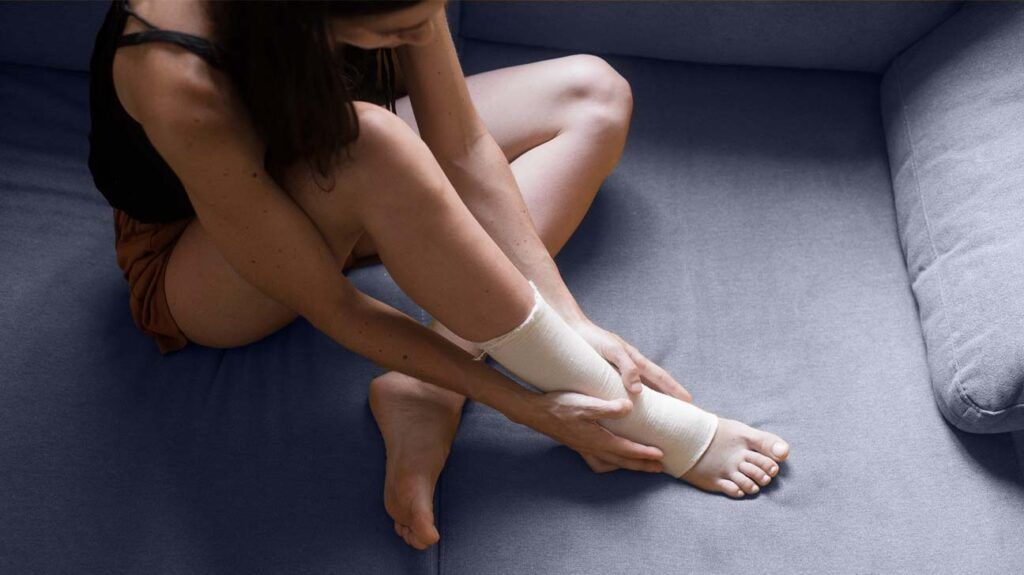Various natural approaches can support bone health. However, none are proven to dissolve bone spurs.
Bone spurs, or osteophytes, are bony projections that develop along bone edges, often in the joints. They are commonly linked with aging, arthritis, and joint degeneration.
While some cases are asymptomatic, bone spurs can also lead to pain and mobility issues, particularly when located near joints and tendons. When bone spurs cause concern, conventional treatments include pain-relieving medications, steroid injections, or surgery.
Some individuals may prefer to try natural remedies to dissolve bone spurs. However, while these approaches may help manage symptoms, they are not a guaranteed strategy for removing bone spurs.
This article focuses on natural methods to manage bone spurs and how they help with symptoms.

A cold compress may help reduce swelling and inflammation caused by bone spurs. It works by constricting blood vessels and decreasing blood flow to the affected area.
Options for cold therapy include a frozen gel pack, a chilled towel, or a sock filled with rice prepared specifically for this purpose. Alternatives include a bag of frozen peas or corn. However, it is best to designate the bag solely for cold compress use and avoid consuming its contents afterward if it has been frozen and defrosted several times.
A person can apply a cold compress to the affected area, ensuring a protective layer between the ice and the skin.
Certain dietary supplements may help support joint health, but little research evaluates their value in dissolving bone spurs.
Options include:
- Glucosamine and chondroitin: These supplements
may support joint health. They are components of cartilage and may assist in repair and joint lubrication. However, studies have had inconsistent results, and experts are unsure of their effectiveness. - Omega-3 fatty acids: Omega-3s from fish oil and flaxseeds have anti-inflammatory properties that may ease the pain and discomfort of bone spurs. They also contribute to overall joint health.
- Vitamins D and K: Vitamin D plays a crucial role in calcium absorption and bone health. Adequate vitamin D levels are helpful for proper bone remodeling and strength, while vitamin K is essential for bone metabolism and maintenance of bone strength.
- Calcium: Calcium is crucial in maintaining bone strength and density. Adequate calcium intake can support the body’s natural bone formation and repair processes, which may be beneficial in the context of bone spurs.
A bone-healthy diet should focus on nutrient-rich foods while minimizing those high in empty calories, such as added sugars, salt, and saturated fats. It is critical to eat foods that contribute positively to bone strength and overall health.
In particular, calcium and vitamin D are essential for robust bones. Dairy products — such as milk, yogurt, and cheese — are good calcium sources.
Additionally, vitamin D supports calcium absorption. Some natural sources of vitamin D include fatty fish such as salmon and sardines.
Individuals should also add vegetables and fruits into their diet, especially dark green, red, and orange varieties, to further bolster bone health.
Regular exercise is
In children, exercise can help build strong bones and muscles. In adults, it has the following benefits:
- strengthens bones
- prevents bone loss
- enhances bone density by replacing old bone with new
- improves balance and coordination
- helps prevent falls, fractures, and osteoporosis onset
Weight bearing exercises — like brisk walking, jogging, and running — will help stimulate bone growth and strengthen bones. Also, resistance training is vital for bolstering both muscle and bone strength. A person can use weight machines, free weights, or bodyweight exercises as part of a resistance training routine.
Combining weight bearing and resistance exercise helps form a comprehensive approach to maintaining and improving bone health.
Adults should aim for at least 150 minutes of moderate intensity exercise weekly, including muscle strengthening activities at least twice weekly.
Cell-based therapies are a relatively new approach to treating joint and bone conditions such as
In theory, these therapies could help manage symptoms of bone spurs by promoting the healing and regeneration of joint tissues. However, further research is necessary.
PRP therapy is an advanced treatment method that uses the healing power of a person’s blood to speed up recovery in injured or broken-down tissues.
It requires taking a blood sample and processing it in a centrifuge to concentrate the platelets. Platelets are critical components of blood that contribute to clotting and healing.
The resulting platelet-rich plasma contains a high concentration of growth factors, which are essential for tissue repair and regeneration. When a doctor injects them into the affected area, the growth factors stimulate natural repair processes.
PRP shows potential in treating various skeletal conditions, particularly those involving joints, tendons, and ligaments. However, further clinical trials are needed to confirm its effectiveness.
While it is not possible to dissolve bone spurs naturally, an individual can try some strategies for managing their symptoms and improving joint function.
Often, bone spurs cause no symptoms. However, if they do cause issues, a person can try cold compresses, supplements, dietary changes, and exercises to help manage discomfort.
People could also discuss cell-based therapies and PRP with their doctor to figure out whether these advanced treatments might work for their condition. These options have shown promise in managing pain and improving joint function by promoting healing and reducing inflammation in affected areas.
